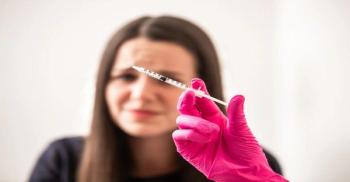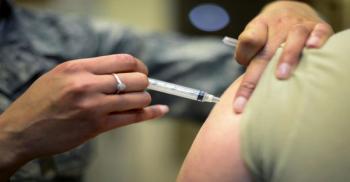
Physicians and pharmacists must communicate to improve adult vaccination rates
Pharmacies are a convenient option for patients who need vaccines, but there are still barriers that complicate the pharmacy-based vaccination process. A new report highlights the problems and proposes solutions.
A clinical visit is jam-packed with things to discuss and interventions to perform, and physicians have admitted that adult vaccinations can be missed in this process. Pharmacies can fill the gap, but a new report highlights a number of barriers that make immunizations at the local drug store a drag.
The
The report revealed that patients most often had to be referred outside of the pharmacy for vaccination for several reasons, including the patient’s insurance not covering pharmacy-based vaccine administration, and patient age not within the approved protocols for administration.
Brandon J. Patterson, PharmD, PhD, manager of U.S. Health Outcomes and Epidemiology at GSK and co-author of the study, said the report highlights the progress that has been made in the advancement of pharmacy-based immunizations as an additional access point for patients.
“There are continuing opportunities for increased engagement of pharmacists as immunization providers and continuing work is needed to address barriers to optimizing the role of pharmacists within the immunization neighborhood to appropriately increase vaccination rates of adults in the U.S.,” Patterson said.
Pharmacists play an important role in vaccine education, making vaccine recommendations, providing access to immunization services, and administering vaccines, said Patterson and fellow co-author Philip Buck, PhD, MPH, head of U.S. Health Outcomes and Vaccines at GSK. The scope of what pharmacies were able to offer varied by pharmacy and location, the report noted, particularly when it came to the maintenance of immunization registries. Insurance policies affecting coverage of vaccines and different rates of copays between pharmacies and physician offices continue to act as barriers, according to Patterson and Buck.
“Barriers to vaccination are often due to cost to patients or lack of insurance coverage. Additional strategies are needed to remind patients about the value and importance of vaccinations, especially for vaccines with multiple doses,” Patterson said. “Increasing the use of immunization registries within and accessible across states is also needed to improve the services.”
Clinicians can help mitigate these barriers by communicating to pharmacists how they would like to receive documentation of vaccine administrations by pharmacists, and pharmacies can help clinical practices by reinforcing vaccine recommendations and helping to complete immunization series, said Patterson and Buck.
“Ideally, communication between pharmacists and other providers should be a two-way process with physicians providing a referral to the pharmacy and the pharmacy closing the loop documenting and sending confirmation back to the patient’s primary care provider, if known, once the vaccine is administered,” Patterson said. “Both groups need to report vaccinations administered to the immunization registry and utilize the registry in assessing patient immunization status.”
Patterson and Buck said they hope the report will motivate additional efforts to address provider and patient barriers that hinder the optimization of the pharmacist’s role in immunization.
“Increasing adult immunization rates is the goal that all providers can agree to and finding ways to implement policy to help remove barriers remains important,” Patterson said.
Newsletter
Stay informed and empowered with Medical Economics enewsletter, delivering expert insights, financial strategies, practice management tips and technology trends — tailored for today’s physicians.








